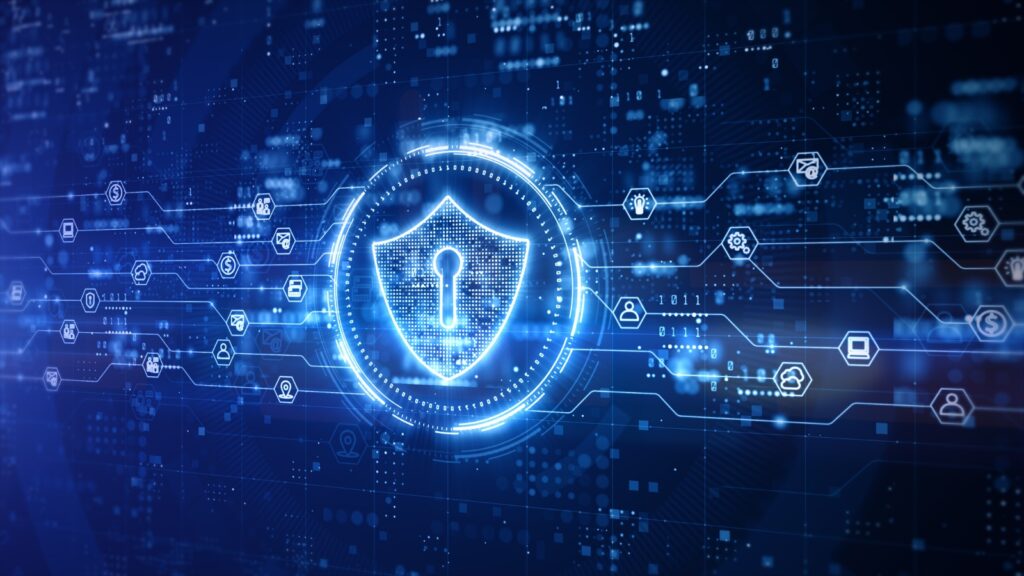Introduction
Cybersecurity in today’s vast digital environment holds immense significance. This intricate tapestry of practices, technologies, and vigilance serves as an invisible defense against threats attempting to exploit vulnerabilities or breach defenses and steal sensitive information. When connectivity and data is an integral component of operations, having robust cybersecurity measures in place is not only desirable but essential.
Cybersecurity Is A Sentinel Against Digital Threats:
- Cybersecurity: serves as the shield that protects networks, systems and data against digital threats that emerge on an almost daily basis. But its true value goes far beyond mere protection; cybersecurity safeguards the confidentiality of information and guarantees digital transactions with integrity.
- Cyber Threats Are Everywhere: In today’s interconnected world, breaches have far-reaching repercussions that go well beyond personal inconvenience; from financial to reputational devastation and beyond. Their consequences underscore the urgency and necessity of cybersecurity measures.
Unveiling the CIA Triad
- At the Core of Protection: The CIA Triad serves as the backbone of cybersecurity, comprising three pillars that ensure confidentiality, integrity, and availability for business operations.
- Confidentiality: Protecting sensitive data from prying eyes is at the core of confidentiality’s principles. Encryption, access controls and data masking all play an integral role in providing this protection.
- Integrity: Data integrity ensures that information remains unaltered and reliable as it travels along its journey. Cryptographic checksums, digital signatures, and data validation mechanisms serve as protectors of integrity.
- Availability: Maintaining constant availability of data and services is of utmost importance. Through redundancies, failover mechanisms, and strategic design strategies, availability can be maintained even during periods of hardship or disruption.

Preventing Malware Infections
- Fighting Malicious Code: Malware has long been seen as an ongoing cyber threat; therefore bolstering defenses against it should be seen as essential part of cybersecurity strategies.
- Vigilance through Software Updates: Implementing regular software and operating system updates provides a digital barrier against emerging threats, often including patches for vulnerabilities that render potential attack vectors obsolete.
- User Education and Empowerment: Inculcating individuals with knowledge on safe browsing practices, downloading unproven material, and the dangers associated with suspicious links is paramount in protecting themselves against malware infections.
- Social Engineering as a Form of Deception: Social engineering is an art honed by cybercriminals to take advantage of human psychology to launch cyber attacks against them. Awareness is our best defense against such an insidious danger.
- Understanding Psychological Manipulation: Social engineering relies on exploiting trust, fear and urgency for its foundation; by being aware of such tactics individuals can protect themselves from manipulation.
- Cultivating a Culture of Cyber Hygiene: With increased awareness, individuals can navigate the digital landscape with caution, using critical thinking and circumspection when browsing online content, which will effectively deter social engineering attempts.
- Strong Passwords schutzen our digital fortresses: Passwords serve as the gateskeepers to our digital domains, protecting access with intricate strings of characters that allow only you to gain entry.
- Forming Imprenetrable Barriers: Password managers can help to create and store these formidable fortresses securely.
- Two-Factor Authentication (2FA) Provides Extra Protection: Two-Factor Authentication (2FA) introduces an additional layer of security, compelling users to provide another form of verification alongside their password.
Continuous Vigilance through Updates
- An Evolving Landscape: The digital world is an ever-evolving battlefield where threats emerge constantly; regular software updates serve as an effective defense mechanism against these rapidly developing adversaries.
- Sealing the Breach: Patching Vulnerabilities: Updates deliver crucial security patches, effectively sealing vulnerabilities and improving system resilience.
- Equipping for the Future: Regular software updates equip digital infrastructure to withstand cybercriminal tactics, strengthening overall cybersecurity posture.
Navigating the Web of Deceit
Cybercriminals use deceptive links and attachments to distribute malware or obtain sensitive data, so exercising caution when clicking such links or attachments is vital to protecting against such threats.
- Prudent Vigilance: Careful consideration should always be given before clicking links from unsolicited communications, especially those sent without being requested to do so. Verifying attachments and links as a part of safeguarding against potential risks is also critical.
- Backing Up Data Regularly A Safeguard from Catastrophe: Data backups cannot be understated as a safeguard against potential cyber incidents like ransomware attacks or hardware failure.
- Data Backups as a Safety Net: Maintaining regular backups of critical information ensures that even in the event of data breach or loss, recovery is still possible.

Conclusion
As we traverse the digital realm, cybersecurity becomes a faithful companion, helping us navigate its maze of cyber threats. Following the principles of the CIA triad and practicing strong password protection can protect us against malware attacks; understanding social engineering helps protect against deceptive links; fortification through strong passwords helps safeguard resilience of continuous updates; and exercising caution with deceptive links are all part of building our digital defenses – by adopting proactive measures and developing an organizational culture of cyber hygiene we ensure not just our digital existence but the entirety of global interconnectivity itself!
FAQS
- Why Is User Education Essential To Cybersecurity? User education enables individuals to recognize, resist and report cyber threats more effectively – ultimately strengthening overall cybersecurity resilience.
- How can data backups contribute to cybersecurity? Data backups provide a valuable safeguard against data loss due to cyber incidents like ransomware attacks or hardware malfunction.
- What role does Vigilance play in cybersecurity? Vigilance means acting with caution, skepticism and critical thought while traversing the digital realm in order to thwart threats posed by potential cyber attacks.
- How Can Two-Factor Authentication (2FA) Enhance Security? Two-Factor Authentication adds another level of protection by requiring users to provide secondary verification along with their password, thus mitigating unauthorized access.
- How does cybersecurity impact individuals and organizations? Cybersecurity protects sensitive data, protects privacy, and ensures the integrity of digital operations – which in turn has an effect on individuals, businesses, governments, etc.
To Read News related articles and much more please visit website Likhaye.com
or Click here





